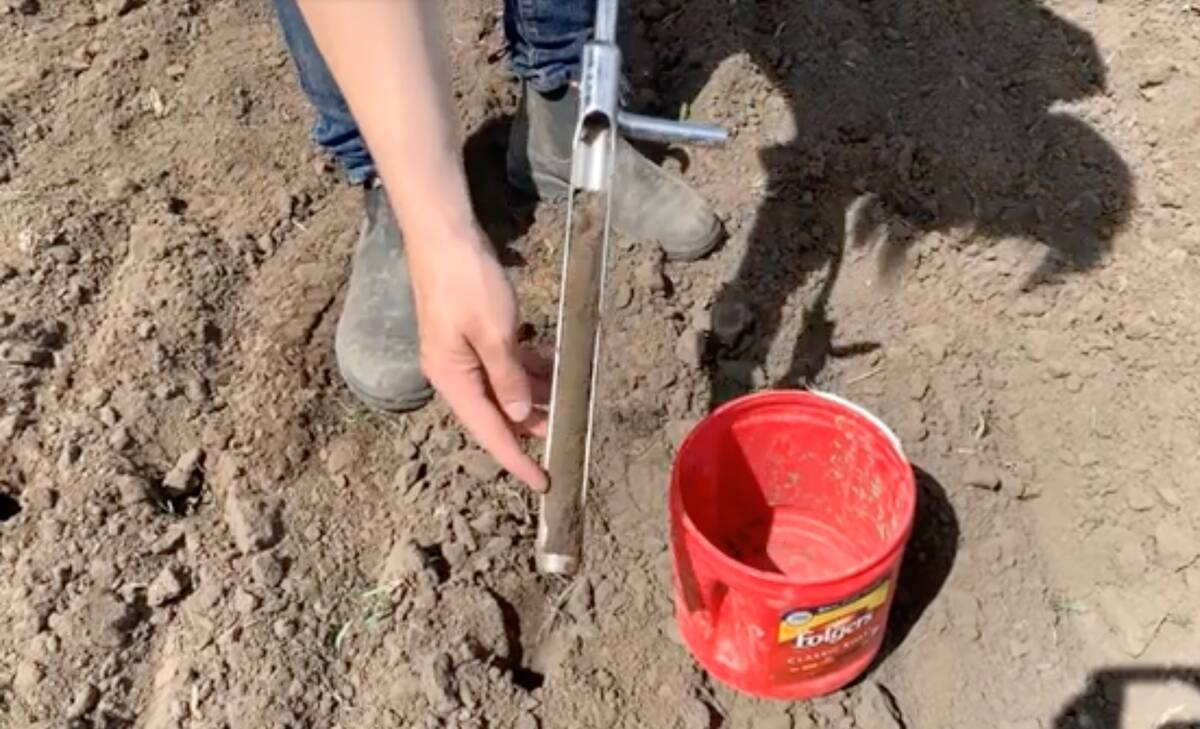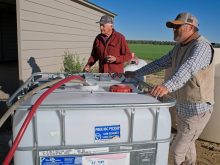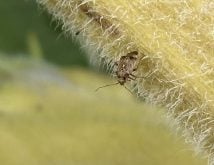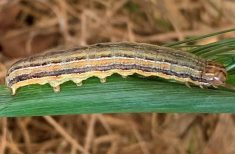Grasshopper forecasts, based on last summer’s population counts, weather data and recent trends, are now available in all three Prairie provinces for 2019.
Alberta Agriculture and Forestry entomologist Scott Meers warns that a dry spring could lead to major risk of grasshopper outbreaks in 2019. In southern Alberta, consecutive dry summers have resulted in an increase in grasshopper numbers. This is especially true in parts of the Special Areas in southeast Alberta, and western southern Alberta including Vulcan, Willow Creek, Lethbridge, Cardston and Magrath.
Read Also

Make a plan to achieve the four Rs of fertilizer management
Planning for 4R nutrient management must be farm-specific — that is, geared for the unique crops, cropping practices, soils and climatic conditions of the farm, researcher Ross McKenzie writes.
The rest of the province shows light to low grasshopper populations. Meers says, though, that while the forecast for Peace is very low, he has been investigating the possibility that the 2017 survey is more predictive of the 2019 situation than previously thought.
“I have very strong suspicions that we could see high grasshopper populations in the Peace and in northern central Alberta,” he said. “We can’t change the forecasting model until the research is done however.”
The Manitoba forecast shows very light risk for most of the province. While there was an increase in grasshopper levels in some areas compared to previous years, populations in 2019 will depend heavily on weather and the presence of natural enemies. If weather is favourable for survival and development, there could be localized areas of concern.
The pest survey map for Saskatchewan also shows very low populations of grasshopper for 2019. Some 1,200 sites were monitored for the survey in 2018.
“Numbers are low,” said provincial entomologist James Tansey. “Despite the relatively dry conditions, we’ve still got relatively low populations.
“It’s still really important for growers to get out and scout their fields,” he added. “We hit 1,200 sites, but we can’t hit every site in the province.”
Managing grasshoppers
Grasshopper forecasts are based on counts in the previous year. Forecasts are meant as a guideline and can change, depending on weather and the presence of natural enemies. In some years, says Manitoba Agriculture entomologist John Gavloski, enemy populations may be high enough to impact the number of grasshopper eggs that survive and hatch.
Growers should scout regularly and often, he says. If grasshopper populations are spotted, they should not assume that the outbreaks are widespread. Sometimes grasshoppers are found only in the outer edges of fields.

The economic threshold for grasshopper is eight to 10 pests per square metre. The difficulty is counting them, as they are quick to move when crop is disturbed. Scouting usually begins around June 20 and should continue until around July 20 after they hatch.
“With the scouting, it’s an estimation,” said Gavloski. “There’s no way a person can be accurate doing a grasshopper count. It’s a matter of trying to get a feel or approximation for what the grasshopper levels are like.”
Gavloski encourages growers to closely evaluate grasshopper species as they are swept up, as there are a lot of non-pest species of grasshoppers. “Especially when we get into late season, sometimes the ditches have a lot of katydids and Carolina grasshopper, which isn’t a pest species,” he said.
Of the 85 grasshopper species in Western Canada, there are only four pest species. They include the migratory grasshopper, the two-striped grasshopper, the Packard grasshopper, and the clear-winged grasshopper.
The clear-winged grasshopper is more of a grass specialist, which puts cereal crops at risk, said Gavloski. The other three are generalists, and although they do have preferences, they will feed on the majority of crops if they are hungry.
If you have to spray, spray early, Gavloski says. “It’s much easier to kill the juveniles than the adults,” he said. “You want to make sure the hatch is done, so spraying too early is not good. But spraying too late is also not good.
“There are products out there with very good residuals,” he added. “If they put a product down with a good residual, say around the field edge, early enough, that might prevent them from having to do a whole field later on.”
To reduce insecticide use on rangeland and pastures, Gavloski recommends treating a 15-foot strip, leaving the next 45 feet untreated, and then treating the next 15 feet.
“The reason it works is because grasshoppers move around, so they’re moving from untreated to treated areas,” he said. “You can get very good control with a technique like that.”
















